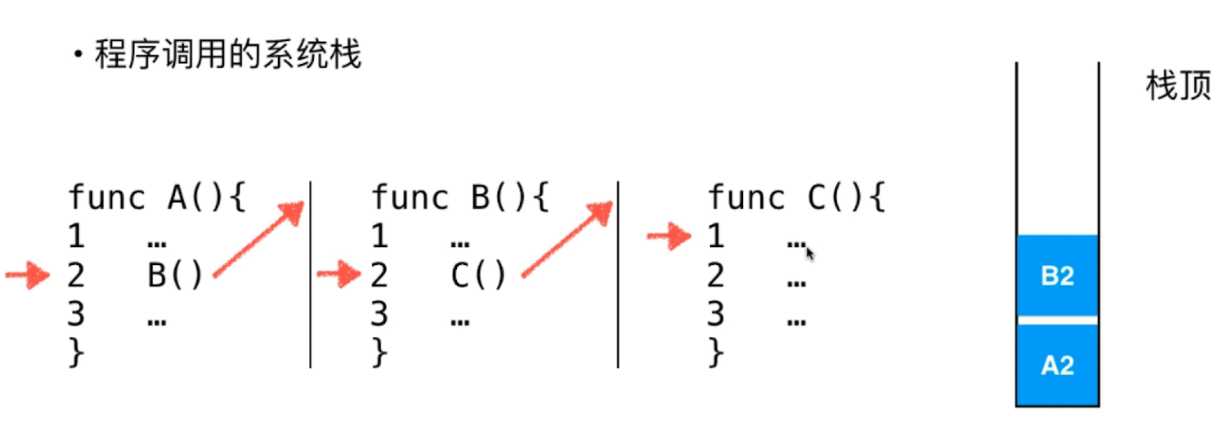栈的应用和基本实现
Posted mingmingmomo
tags:
篇首语:本文由小常识网(cha138.com)小编为大家整理,主要介绍了栈的应用和基本实现相关的知识,希望对你有一定的参考价值。
栈的概念

栈的应用
- 无处不在的Undo操作(撤销)
- 程序调用的系统栈

栈的实现

public interface Stack<E> { int getSize(); boolean isEmpty(); void push(E e); E pop(); E peek(); }
public class ArrayStack<E> implements Stack<E> { private Array<E> array; public ArrayStack(int capacity){ array = new Array<>(capacity); } public ArrayStack(){ array = new Array<>(); } @Override public int getSize(){ return array.getSize(); } @Override public boolean isEmpty(){ return array.isEmpty(); } public int getCapacity(){ return array.getCapacity(); } @Override public void push(E e){ array.addLast(e); } @Override public E pop(){ return array.removeLast(); } @Override public E peek(){ return array.getLast(); } @Override public String toString(){ StringBuilder res = new StringBuilder(); res.append("Stack: "); res.append(‘[‘); for(int i = 0 ; i < array.getSize() ; i ++){ res.append(array.get(i)); if(i != array.getSize() - 1) res.append(", "); } res.append("] top"); return res.toString(); } }
public class Array<E> { private E[] data; private int size; // 构造函数,传入数组的容量capacity构造Array public Array(int capacity){ data = (E[])new Object[capacity]; size = 0; } // 无参数的构造函数,默认数组的容量capacity=10 public Array(){ this(10); } // 获取数组的容量 public int getCapacity(){ return data.length; } // 获取数组中的元素个数 public int getSize(){ return size; } // 返回数组是否为空 public boolean isEmpty(){ return size == 0; } // 在index索引的位置插入一个新元素e public void add(int index, E e){ if(index < 0 || index > size) throw new IllegalArgumentException("Add failed. Require index >= 0 and index <= size."); if(size == data.length) resize(2 * data.length); for(int i = size - 1; i >= index ; i --) data[i + 1] = data[i]; data[index] = e; size ++; } // 向所有元素后添加一个新元素 public void addLast(E e){ add(size, e); } // 在所有元素前添加一个新元素 public void addFirst(E e){ add(0, e); } // 获取index索引位置的元素 public E get(int index){ if(index < 0 || index >= size) throw new IllegalArgumentException("Get failed. Index is illegal."); return data[index]; } public E getLast(){ return get(size - 1); } public E getFirst(){ return get(0); } // 修改index索引位置的元素为e public void set(int index, E e){ if(index < 0 || index >= size) throw new IllegalArgumentException("Set failed. Index is illegal."); data[index] = e; } // 查找数组中是否有元素e public boolean contains(E e){ for(int i = 0 ; i < size ; i ++){ if(data[i].equals(e)) return true; } return false; } // 查找数组中元素e所在的索引,如果不存在元素e,则返回-1 public int find(E e){ for(int i = 0 ; i < size ; i ++){ if(data[i].equals(e)) return i; } return -1; } // 从数组中删除index位置的元素, 返回删除的元素 public E remove(int index){ if(index < 0 || index >= size) throw new IllegalArgumentException("Remove failed. Index is illegal."); E ret = data[index]; for(int i = index + 1 ; i < size ; i ++) data[i - 1] = data[i]; size --; data[size] = null; // loitering objects != memory leak if(size == data.length / 4 && data.length / 2 != 0) resize(data.length / 2); return ret; } // 从数组中删除第一个元素, 返回删除的元素 public E removeFirst(){ return remove(0); } // 从数组中删除最后一个元素, 返回删除的元素 public E removeLast(){ return remove(size - 1); } // 从数组中删除元素e public void removeElement(E e){ int index = find(e); if(index != -1) remove(index); } @Override public String toString(){ StringBuilder res = new StringBuilder(); res.append(String.format("Array: size = %d , capacity = %d ", size, data.length)); res.append(‘[‘); for(int i = 0 ; i < size ; i ++){ res.append(data[i]); if(i != size - 1) res.append(", "); } res.append(‘]‘); return res.toString(); } // 将数组空间的容量变成newCapacity大小 private void resize(int newCapacity){ E[] newData = (E[])new Object[newCapacity]; for(int i = 0 ; i < size ; i ++) newData[i] = data[i]; data = newData; } }
以上是关于栈的应用和基本实现的主要内容,如果未能解决你的问题,请参考以下文章